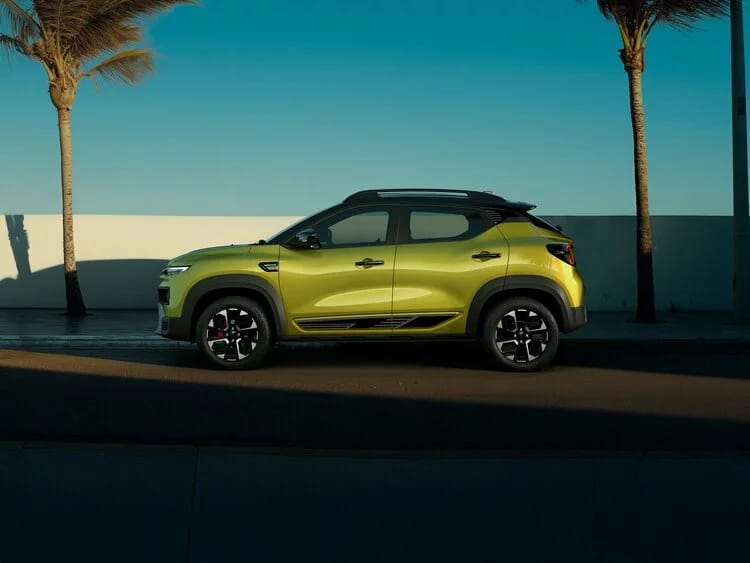Find out the updated GST on cars in India 2025: new tax rates, calculation examples, impacts on prices, and who is exempt. Stay informed before you buy your next vehicle.

Introduction
India’s Goods and Services Tax (GST) regime underwent a major overhaul in 2025. One of the sectors most affected by this change is the automobile sector, especially cars. For car buyers, manufacturers, and dealers, understanding the GST on cars in India 2025 means more than just seeing a number on a price tag—it impacts cost, demand, and the kind of cars people choose. In this post, we cover the new GST on cars in India as of 2025, how to calculate it, what kinds of cars are affected, the impact on prices and demand, and the exemptions you should know.
What is GST on Cars & What’s Changed in 2025
GST (Goods and Services Tax) is a unified tax applicable on the supply of goods and services across India. Before 2025, cars in India had different tax rates: base GST, plus a “cess” for larger or luxury or high-capacity cars. Multiple slabs (like 28% GST + various cess) made taxation complex.
In September 2025, during the 56th GST Council meeting, the government revised GST rates on cars to simplify the tax structure and reduce costs for many buyers. The changes take effect from 22 September 2025.
CAR GST Rate LIST on Cars in India 2025
Here are the main types and the revised GST on cars in India:
| Category | Definition / Criteria | Old GST + Cess New GST Rate (from 22 Sept 2025)
|
| Small / affordable cars | Petrol / Petrol-Hybrid / LPG / CNG cars with engine capacity ≤ 1200 cc and length ≤ 4000 mm; Diesel / Diesel-Hybrid cars with engine capacity ≤ 1500 cc and length ≤ 4000 mm | ~28% GST + cess (varied) 18% GST, no additional cess |
| Luxury / large / high-capacity cars | Cars with engine > limits above, or length > 4000 mm, or larger petrol / diesel / hybrid / SUVs falling in luxury segment | Earlier also 28% + high compensation cess (often pushing effective rate much higher) 40% GST rate, no separate cess. |
Other notable changes:
The removal of compensation cess for these categories means simpler calculation and lower total tax in many cases.
Vehicles imported also attract IGST (Integrated GST), customs duty etc., which still affect final cost.
How to Calculate GST on Cars (2025)
To understand how much extra you pay due to GST on cars, here’s a step-by-step method with examples.
Formula Basics:
- Ex-showroom price = Base cost of the car before taxes (manufacturer’s price + dealer margin etc.)
- GST % applicable = 18% or 40% as per category
- GST amount = (Ex-showroom price) × (GST rate)
- On-road price = Ex-showroom price + GST amount + other charges (registration, insurance, road tax etc.)
Example 1: Small Petrol Car
Ex-showroom price: ₹6,00,000
Category: Petrol ≤1200 cc, ≤ 4,000 mm → GST = 18%
GST amount = 6,00,000 × 0.18 = ₹1,08,000
So before road tax etc, cost = ₹7,08,000
Example 2: Luxury SUV
Ex-showroom price: ₹30,00,000
Category: Larger car / engine > capacity or length etc → GST = 40%
GST amount = 30,00,000 × 0.40 = ₹12,00,000
Pre-other charges cost = ₹42,00,000
These calculations show how GST on cars in India 2025 can add significantly, especially in luxury / large car segments.
Impact of New GST on Car India Prices & Market
Price Reduction for Many Models
Many small cars and some mid-segment models saw ex-showroom price cuts once the GST rate was reduced from 28% + cess to the new 18% slab. For example, cars like the Maruti Wagon R have become cheaper.
Similarly luxury or large SUVs now attract a flat 40% GST, which though still high, in many cases replaces a GST + high cess combination, leading to a smaller effective rate compared to what buyers were paying before.
Effects on Consumer Behavior
Affordability has increased for first-time car buyers or those targeting small / affordable cars. With the lower GST, their monthly EMIs / loan burdens become lighter.
Shift in demand may lean more toward small / mid-segment cars, especially those that drop materially in price.
Luxury segment cars still see high prices, but some buyers may perceive improved value given that the tax burden is somewhat less opaque now.
Effects on Manufacturers & Dealers
Car makers will need to adjust pricing, production plans, and inventory forecasts. Some models may sell more due to lower prices; others less if luxury buyers were less price-sensitive.
Dealers may see an increase in inquiries and bookings for segments benefiting most (small cars). Inventory of luxury cars may require more discounts or value-add offers to maintain demand.
Government Revenue & Policy Goals
While GST revenue from cars may reduce per unit (in small car segments), larger volume could offset some losses.
Simplification (removal of cess and campaign for more uniform GST slabs) helps reduce compliance cost and policy confusion.
The change aligns with goals of boosting domestic automobile demand, encouraging cleaner / more fuel-efficient cars, and possibly lowering inflation in vehicle prices.
Key Exemptions & Special Cases
Even with the new GST rates, there are important exemptions, special categories, and concession schemes in GST on cars in India 2025:
- Persons With Disabilities (PWD) ExemptionCars for persons with disabilities (orthopedic disability ≥ 40%) get concessional GST rates. For example, privately used vehicles permitted under certain engine/length criteria may be exempt or taxed at lower GST. Requirements include getting a GST Concession Certificate from the relevant government portal.
- Used Cars / Pre-owned Cars
Typically, sale of used cars by unregistered dealers may be out of scope of GST, or lower tax liability applies. Also, sale by registered dealers involves GST but often difference in valuation etc. (Note: specifics vary, check state rules or local authority interpretation.)
- Electric Vehicles (EVs) & Hybrids
Though much of the GST revision focused on engine capacities and length, vehicular type (EV/hybrid) often has special incentives / lower duties or GST in earlier rules. As of the current announced changes, much of the focus was on conventional (petrol/diesel/hybrid) cars. If you are buying an EV, check the current GST rules and incentives in your state/at the national level. (Some benefit may still be applicable.)
- Government / Diplomatic Vehicles
Certain imports or purchases for government, diplomatic use (e.g. armoured sedans for President secretariat) may have ad hoc IGST + cess exemptions.
How to Know Which GST Rate Applies to Your Car
Check your car’s engine capacity (cc) and whether it is petrol/diesel/hybrid/Electric.
Check length of the car – the ≤ 4000 mm threshold is relevant for small cars in the revised law.
See whether the car’s specification puts it in the “luxury / larger car” category (engine or size above small car limits).
Check the invoice date – only cars invoiced on or after 22 September 2025 should have the new GST rate. Deals/invoices before that may still use the old rates.
Confirm with the dealer or manufacturer if the new GST is already applied or will be passed on (some manufacturers/brands have announced they are “passing on full benefits”).
Potential Challenges / Issues
Lag in passing on benefits: Even though GST is revised, some dealers/manufacturers may delay adjusting ex-showroom prices or may add on other surcharges. Buyers need to check official price lists.
Other taxes / charges still apply: Road tax, registration, insurance, state-level taxes etc may still add significantly to on-road cost. Lower GST doesn’t eliminate those.
Import / luxury items still pricey: Imported luxury cars still attract customs duty, other import‐related charges; even with 40% GST, final price remains high.
State variations: Though GST is a central tax, some state rules or transport department fees (road tax etc) may vary by state which impacts final cost.
Broader Economic & Social Impacts
Boost in vehicle sales: Lower GST on many popular small cars can stimulate purchases, especially during the festive season.
Demand shift: Buyers who might have considered cheaper second-hand cars or scooters might shift to new small cars due to improved affordability.
Environmental impact: Cheaper newer vehicles might encourage replacement of older, more polluting vehicles. If combined with incentives for EV / hybrid, could help reduce emissions.
Auto industry growth: Downstream effects: parts suppliers, dealers, financing institutions all may get a fillip from increased demand in accessible car segments.
Frequently Asked Questions (FAQs)
Q1: From when are the new GST rates effective?
A: The new rates under GST on cars in India 2025 are effective from 22 September 2025.
Q2: Will all cars benefit from reduced GST?
A: No. Only those that meet the criteria for “small cars” (engine capacity / length as specified) move to 18%. Luxury / large cars > criteria are taxed at 40%.
Q3: Does the GST reduction also apply to used cars?
A: Used cars have different GST / tax treatment, especially depending on whether sold by registered dealers etc. The 2025 changes primarily address new cars.
Q4: Is road tax also reduced?
A: No, road tax is a state government matter; the GST change does not directly affect state taxes or registration charges.
Summary
The GST on cars in India 2025 brings some welcome clarity and relief for many car buyers. Small / affordable cars now attract 18% GST (down from 28% + cess), while luxury or large vehicles are taxed at 40% flat, removing separate cesses. If you’re in the market for a car, checking the invoice date, engine capacity, vehicle length, and making sure the manufacturer/dealer has updated pricing will help you benefit from these changes. Though challenges remain (other taxes, import duties, state charges), overall the revision should lead to more affordable vehicle ownership for many, stimulate demand, and simplify taxation in the auto sector.
Disclaimer
This blog post is for informational purposes only. Laws, tax rates, and rules can change. Always check the latest official notifications from the Government of India (GST Council, CBIC) or consult a tax professional or authorized dealer before making decisions based on GST on cars, calculations, or purchases.
also read :-
Check the best options in compact SUVs available under 8 lakhs
TVS Apache RTR 160 4V: Starting at Rs 1.35 lakh, with 17.31bhp power and powerful features
